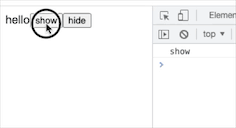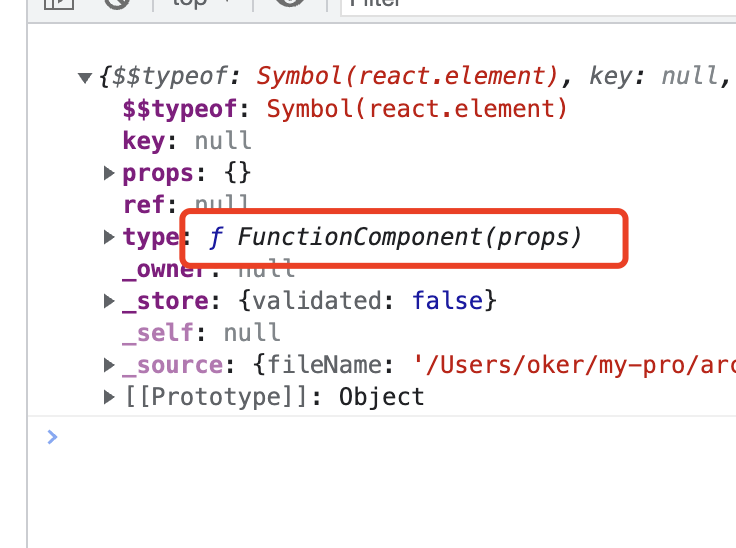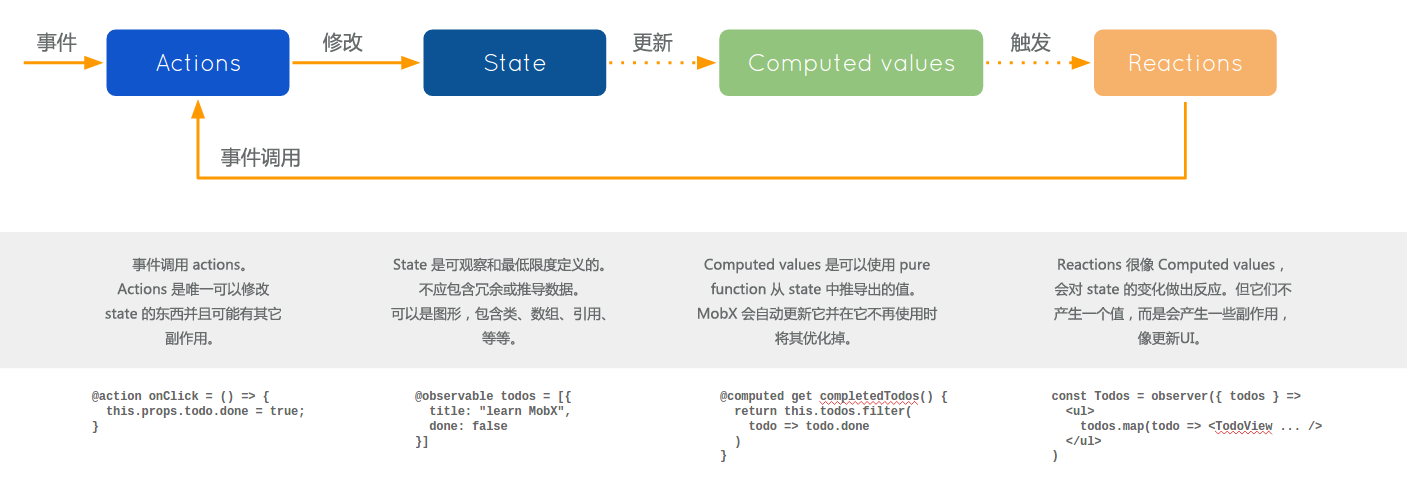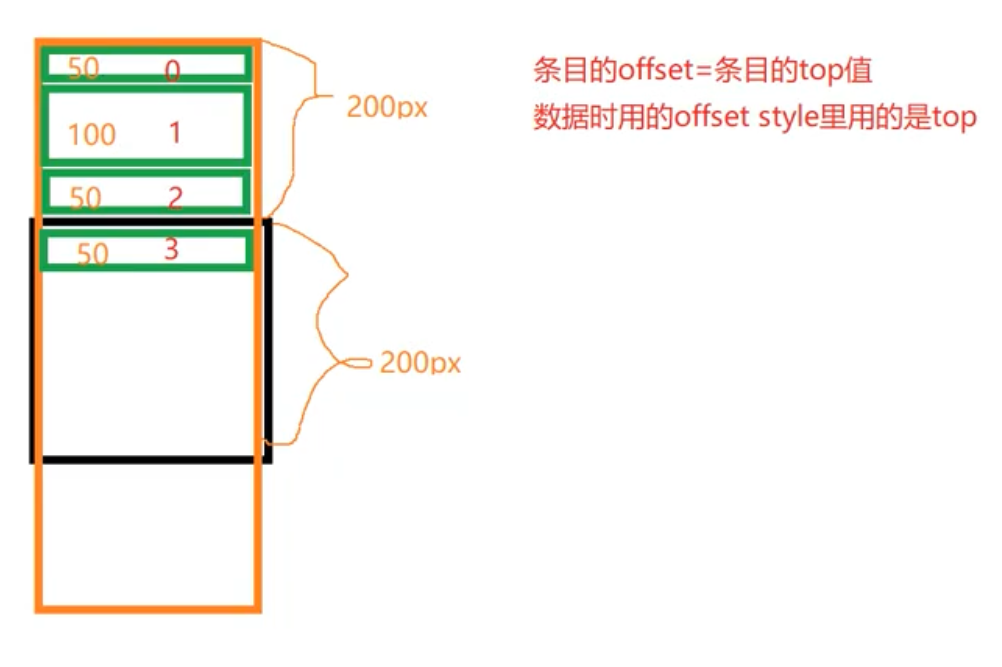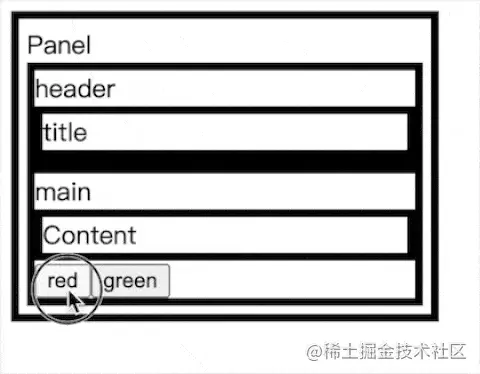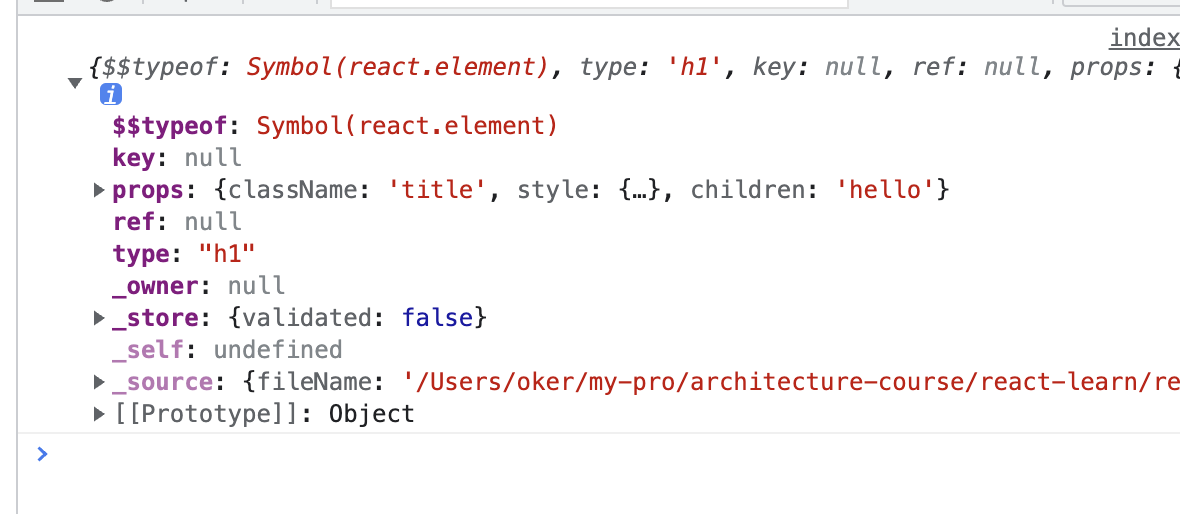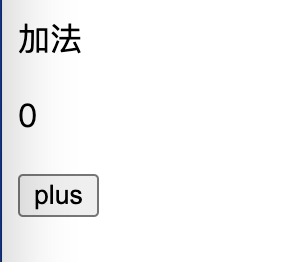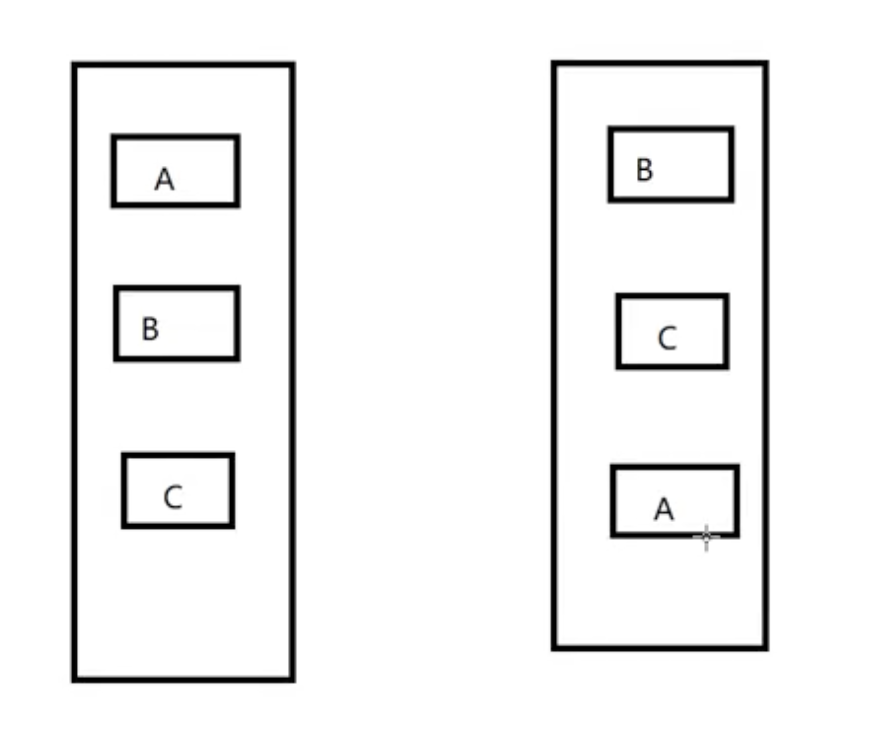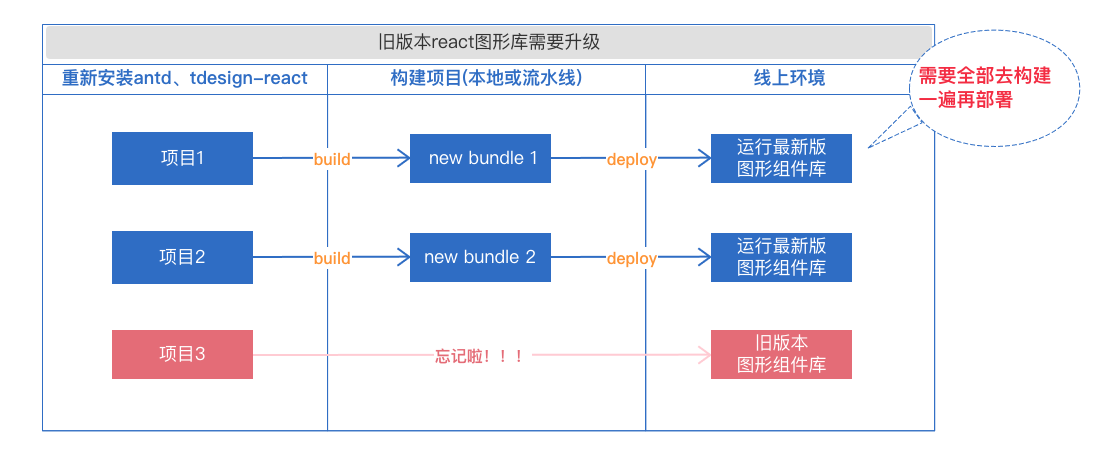概述
高阶组件( higher-order component ,HOC )是 React 中复用组件逻辑的一种进阶技巧,通俗的讲,高阶组件就是一个 React 组件包裹着另外一个 React 组件。它本身并不是 React 的 API,而是一种 React 组件设计理念,众多的 React 库已经证明了它的价值,例如耳熟能详的 react-redux。
高级组件使用函数来实现,基本上是一个类工厂,它的函数签名可以用类似 haskell 的伪代码表示:
hocFactory:: W: React.Component => E: React.Component
其中 W (WrappedComponent) 指被包裹的 React.Component,E (EnhancedComponent) 指返回类型为 React.Component 的新的 HOC。
高阶函数是把函数作为参数传入到函数中并返回一个新的函数。倘若我们把函数替换为组件,就是高阶组件,实现上如下:
const EnhancedComponent = higherOrderComponent(WrappedComponent);
HOC 工厂实现
高阶组件通常有两种实现方式:一种是 Props Proxy,另一种是Inheritance Inversion。
- Props Proxy: HOC 对传给 WrappedComponent W 的 porps 进行操作,并将提取 WrappedComponent state 以及使用其他元素来包裹 WrappedComponent。
- Inheritance Inversion: HOC 继承 WrappedComponent W。
Props Proxy 作为一层代理,会发生隔离,因此传入 WrappedComponent 的 ref 将无法访问到其本身,需在 Props Proxy 内完成中转。
Props Proxy
Props Proxy的简单实现。
function ppHOC(WrappedComponent) {
return class PP extends React.Component {
// 实现 HOC 不同的命名
static displayName = `HOC(${WrappedComponent.displayName})`;
getWrappedInstance() {
return this.wrappedInstance;
}
// 实现 ref 的访问
setWrappedInstance(ref) {
this.wrappedInstance = ref;
}
render() {
return <WrappedComponent {
...this.props,ref: this.setWrappedInstance.bind(this),} />
}
}
}
HOC 在 render 方法中 返回 了一个 WrappedComponent 类型的 React Element。我们还传入了 HOC 接收到的 props,这就是名字 Props Proxy 的由来。
Props Proxy 的作用
使用 Props Proxy 可以做什么呢?常见的有以下作用:
- 操作 props
- 通过 Refs 访问到组件实例
- 提取 state
- 用其他元素包裹 WrappedComponent
1, 操作 props
你可以读取、添加、编辑、删除传给 WrappedComponent 的 props。当删除或者编辑重要的 props 时要小心,你可能应该通过命名空间确保高阶组件的 props 不会破坏 WrappedComponent。
例如:添加一个新的 props:
function ppHOC(WrappedComponent) {
return class PP extends React.Component {
render() {
const newProps = {
user: currentLoggedInUser
}
return <WrappedComponent {...this.props} {...newProps}/>
}
}
}
2, 通过 Refs 访问到组件实例
你可以通过引用(ref)访问到 this (WrappedComponent 的实例),但为了得到引用,WrappedComponent 还需要一个初始渲染,意味着你需要在 HOC 的 render 方法中返回 WrappedComponent 元素,让 React 开始它的一致化处理,你就可以得到 WrappedComponent 的实例的引用。这个在React 异步开发中会经常用到。
function refsHOC(WrappedComponent) {
return class RefsHOC extends React.Component {
proc(wrappedComponentInstance) {
wrappedComponentInstance.method()
}
render() {
const props = Object.assign({},this.props,{ref: this.proc.bind(this)})
return <WrappedComponent {...props}/>
}
}
}
Ref 的回调函数会在 WrappedComponent 渲染时执行,你就可以得到 WrappedComponent 的引用。
3, 提取 state
你可以通过传入 props 和回调函数把 state 提取出来,类似于 smart component 与 dumb component。
例如,提取了 input 的 value 和 onChange 方法。
@ppHOC
class Example extends React.Component {
render() {
return <input name="name" {...this.props.name}/>
}
}
4, 包裹 WrappedComponent
为了封装样式、布局或别的目的,你可以用其它组件和元素包裹 WrappedComponent。
例如,使用包裹样式:
function ppHOC(WrappedComponent) {
return class PP extends React.Component {
render() {
return (
<div style={{display: 'block'}}>
<WrappedComponent {...this.props}/>
</div>
)
}
}
}
Inheritance Inversion
另一种是 Inheritance Inversion,HOC 类继承了 WrappedComponent,意味着可以访问到 WrappedComponent 的 state、props、生命周期和 render 等方法。如果在 HOC 中定义了与 WrappedComponent 同名方法,将会发生覆盖,就必须手动通过 super 进行调用了。通过完全操作 WrappedComponent 的 render 方法返回的元素树,可以真正实现渲染劫持。这种方案依然是继承的思想,对于 WrappedComponent 也有较强的侵入性,因此并不常见。
例如,下面的代码:
function ppHOC(WrappedComponent) {
return class ExampleEnhance extends WrappedComponent {
...
componentDidMount() {
super.componentDidMount();
}
componentwillUnmount() {
super.componentwillUnmount();
}
render() {
...
return super.render();
}
}
}
那么可以还有Inheritance Inversion做什么呢?
- 渲染劫持(Render Highjacking)
- 操作 state
1,渲染劫持
之所以被称为渲染劫持是因为 HOC 控制着 WrappedComponent 的渲染输出,可以用它做各种各样的事。
通过渲染劫持,你可以完成:
- 在由 render输出的任何 React 元素中读取、添加、编辑、删除 props
- 读取和修改由 render 输出的 React 元素树
- 有条件地渲染元素树
- 把样式包裹进元素树,就行Props Proxy那样包裹其他的元素
注:在 Props Proxy 中不能做到渲染劫持。
虽然通过 WrappedComponent.prototype.render 你可以访问到 render 方法,不过还需要模拟 WrappedComponent 的实例和它的 props,还可能亲自处理组件的生命周期,而不是交给 React。记住,React 在内部处理了组件实例,你处理实例的唯一方法是通过 this 或者 refs。
2,操作 state
HOC 可以读取、编辑和删除 WrappedComponent 实例的 state,如果你需要,你也可以给它添加更多的 state。不过这可能会搞坏 WrappedComponent 的 state,从而造成一些莫名其妙的问题。所以,正确的做法是,要限制 HOC 读取或添加 state,添加 state 时应该放在单独的命名空间里,而不是和 WrappedComponent 的 state 混在一起。
例如:通过访问 WrappedComponent 的 props 和 state 来做调试。
export function IIHOCDEBUGGER(WrappedComponent) {
return class II extends WrappedComponent {
render() {
return (
<div>
<h2>HOC Debugger Component</h2>
<p>Props</p> <pre>{JSON.stringify(this.props,null,2)}</pre>
<p>State</p><pre>{JSON.stringify(this.state,2)}</pre>
{super.render()}
</div>
)
}
}
}
用 HOC 包裹了一个组件会使它失去原本 WrappedComponent 的名字,可能会影响开发和调试。通常会用 WrappedComponent 的名字加上一些前缀作为 HOC 的名字。
例如:
HOC.displayName = `HOC(${getdisplayName(WrappedComponent)})`
//或
class HOC extends ... {
static displayName = `HOC(${getdisplayName(WrappedComponent)})`
...
}
function getdisplayName(WrappedComponent) {
return WrappedComponent.displayName ||
WrappedComponent.name ||
‘Component’
}
相关案例
React-Redux 是 Redux 官方的 React 绑定实现。他提供的函数中有一个 connect,处理了监听 store 和后续的处理。是通过 Props Proxy 来实现的。
radium
Radium 通过在内联样式中使用CSS 伪类增强了内联样式的能力。
话说回来,Radium 是怎样做到内联 CSS 伪类的,比如 hover?它用 Inheritance Inversion 模式做到了渲染劫持,插入对应的事件监听器来模拟 CSS 伪类,比如 hover。事件监听器插入到了 React 组件的 props 里。Radium 需要读取 WrappedComponent 的 render 方法输出的所有组件树,每当它发现一个新的带有 style 属性的组件时,在 props 上添加一个事件监听器。通俗的讲:Radium 修改了组件树的 props,从而实现界面渲染改变。
附:精读高阶组件
版权声明:本文内容由互联网用户自发贡献,该文观点与技术仅代表作者本人。本站仅提供信息存储空间服务,不拥有所有权,不承担相关法律责任。如发现本站有涉嫌侵权/违法违规的内容, 请发送邮件至 dio@foxmail.com 举报,一经查实,本站将立刻删除。


